Continuing from yesterday, you and I will not determine if one or all three of the beers in the Miller Lite Brewers Collection survives testing and ultimately thrives or not. Light beer drinkers, or consumers not currently drinking beer, will.
Presumably it will be on flavor, but certainly marketing will be a factor. The other day I saw an ad for “Craft Beer. Done Lite” pop up on a San Diego website. (Speaking of the marketing, Neal Stewart of Flying Dog has interesting thoughts on this as a line extension.)
And if it’s flavor, I’m the wrong person to ask. So I’m not going to give you drinking notes (but I will provide links at the bottom). Instead, via email and through a public relations representative, I asked some of the questions I would visiting a brewery of whatever size. I didn’t get answers to every one, and some weren’t all that illuminating, so we’ll stick with the highlights. All the information was provided by Miller brewmaster Manny Manuele.
The beers were developed at Miller’s 10-barrel pilot system in Milwaukee. They are intentionally priced between mainstream light beers and the typical craft beer. The suggested retail price for a six-pack is $6.99.
Now, the ingredients (summarized from a couple of exchanges) and other basics.
Blonde Ale
Fermentables: Pale and caramel malt; maize
Hops: Willamette, Galena, Cascade, Chinook
IBU: 14
Ale fermentation
Wheat
Fermentables: Pale, caramel and wheat malt; maize
Hops: Willamette, Galena
IBU: 6
Lager fermentation
Amber
Fermentables: Pale, dark crystal malt; maize
Hops: Willamette, Mt. Hood
IBU: 15
Lager fermentation
How long was spent developing these beers? Where did the idea originate?
Miller Lite Brewers Collection is targeted at mainstream light beer drinkers and capitalizes on two trends driving much of the current growth in the U.S. beer industry.
1. Light beers continue to provide the greatest sheer volume growth as American beer drinkers reaffirm their desire for drinkable, refreshing products.
2. As demonstrated by the continued growth of craft beers, we’re seeing an increasing interest in variety. American beer drinkers are more willing than ever to try different styles and brands.
At the intersection of these trends is Miller Lite Brewers Collection, which provides beer drinkers with the best of both worlds. Only with Miller Lite Brewers Collection can you get real craft-style taste and true light beer refreshment.
Were there different versions? In which case, why were these settled on?
Throughout the year or so we spent developing Miller Lite Brewers Collection, we considered several different styles. By selecting three styles with broad appeal to mainstream beer drinkers interested in trying a craft beer, we’ve significantly increased the likelihood that everyone will find a Miller Lite Brewers Collection variety to enjoy.
Where are they brewed and what is the batch size?
Miller Lite Brewers Collection is brewed in Milwaukee in relatively small batch sizes — less than 500 barrel brews.
Are the Brewers Collection beers all malt beers?
No. We’ve also brewed with wheat and corn for taste, lightness and refreshment.
All-malt is at the core of how “craft” brewers define their products. Would you say you disagree?
First, it’s important to note that these are not intended to be craft beers and are not targeted at craft drinkers. These are craft-style light beers. Additionally, “all malt” is one, but not the only, criteria that defines craft beer. The Brewers Association describes craft as beers brewed with a traditional process using malted and specialty grains, hops, water and yeast to deliver the aroma, taste and appearance characteristics not typically found in mainstream beers. That’s what we’re delivering — a unique consumer taste experience not typically found in light beers and consistent with craft-style beer.
The abv, calories and carbs are the same for all three beers (but different than Miller Lite). Was that intentional?
Yes. Our intention is to deliver more flavor and a more enjoyable taste experience for beer drinkers looking for variety, taste and drinkability in true light beers — in this case, at 4.2 percent ABV, 110 calories and 6.2 grams carbohydrate per 12-ounce serving.
The disclaimer: I received a package with these beers that went out to a variety of media. Here are Lew Bryson’s thoughts, notes from A Roughneck’s Take on Beer (you’ll have to jump between posts), and good marks from a Modern Brewery Age panel.
You’ll also find more opinions at the beer rating sites (but, again, the regulars there are not the target market). Both links are for the Blonde Ale: Rate Beer, and Beer Advocate.
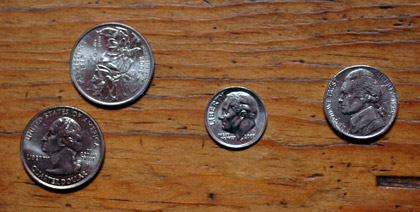
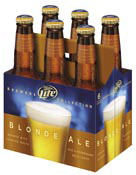 So if you were fishing for beer drinkers who might
So if you were fishing for beer drinkers who might 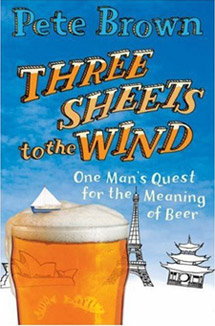 I’ve been waiting for “jolly” Lauren Clark’s wonderful column in the current Ale Street News to pop up online, so I could point you to it:
I’ve been waiting for “jolly” Lauren Clark’s wonderful column in the current Ale Street News to pop up online, so I could point you to it: 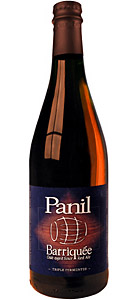 I stand by
I stand by 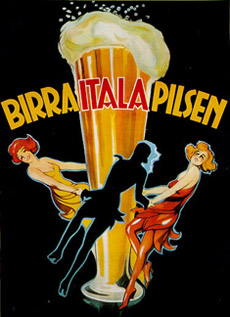 The Italians are coming. The Italians are coming.
The Italians are coming. The Italians are coming.